Originally posted by the lioness,:

500 BC - 700 AD.
Germa known in ancient times as Garama,
Zinchecra, was located not far from the later Garama, an earlier capital
The Garmantes have since mixed into the North African population
quote:The Berber languages as pointed out by numerous authors is full of vocabulary from other languages. Many Berbers may be descendants of the Vandels (Germanic) speaking people who ruled North Africa and Spain for 400 years. Commenting on this reality Diop in The African Origin of Civilization noted that: “Careful search reveals that German feminine nouns end in t and st. Should we consider that Berbers were influenced by Germans or the referse? This hypothesis could not be rejected a priori, for German tribes in the fifth century overran North Africa vi Spain, and established an empire that they ruled for 400 years….Furthermore, the plural of 50 percent of Berber nouns is formed by adding en, as is the case with feminine nouns in German, while 40 percent form their plural in a, like neuter nouns in Latin.
http://www.nvtc.gov/lotw/months/july/berber.html
Introduction
The Berber, or Amazigh, people live in Northern Africa throughout the Mediterranean coast, the Sahara desert and Sahel which used to be a Berber world before the arrival of Arabs. Today, there are large groups of Berber people in Morocco and Algeria, important communitites in Mali, Niger and Libya, and smaller groups in Tunis, Mauritania, Burkina-Faso and Egypt. The Tuareg of the desert also belong to the Berber group. The Berber people speak 26 closely related languages.
Consonants
Berber consonants include:
glottalized consonants, so called because the space between the vocal cords (glottis) is constricted during their pronunciation;
implosive consonants produced with the air sucked inward;
ejective consonants produced with the air "ejected" or forced out;
geminate (doubled) consonants produced by holding them in position longer than for their single counterparts.
Click here to listen to a Berber song recorded in Morocco.
Grammar
Noun phrase
Berber nouns have two cases. One case is used for the subject of intransitive verbs, while the other is used for the subject of transitive verbs and objects of prepositions. There are two genders: masculine and feminine. The plural of nouns has a masculine and a feminine form.
Verb phrase
Verbs are marked for tense and aspect. The perfective of the verb is formed by reduplication of the second consonant of the root, or by the prefix -tt-.
Vocabulary
Most of the vocabulary is Berber in origin with borrowings from Latin, Arabic, French, Spanish, and other sub-Saharan languages. There is generally little or no intelligibility between the dialects.





quote:the Robert Graves quote
Originally posted by Clyde Winters:
A major group from Libya that settled Crete were the Garamante. Robert Graves in (Vol.1, pp.33-35) maintains that the Garamante who originally lived in the Fezzan fused with the inhabitants of the Upper Niger region of West Africa.




quote:There is mo evidence of this happening. Plese give us the date this mixture took place, given the fact they migrated to the Niger Valley.
Originally posted by the lioness,:
500 BC - 700 AD.
Germa known in ancient times as Garama,
Zinchecra, was located not far from the later Garama, an earlier capital
The Garmantes have since mixed into the North African population
quote:
Originally posted by Clyde Winters:
quote:There is mo evidence of this happening. Plese give us the date this mixture took place, given the fact they migrated to the Niger Valley.
Originally posted by the lioness,:
500 BC - 700 AD.
Germa known in ancient times as Garama,
Zinchecra, was located not far from the later Garama, an earlier capital
The Garmantes have since mixed into the North African population
.
quote:
Originally posted by Clyde Winters:
This theory is interesting
quote:The Garmantes lived in Fezzan approximatly 5th century BCE to the 5th century CE (possibly later) operating the Trans-Saharan trade routes successively between Carthage and the Roman Empire in North Africa and Sahelian states of west and central Africa. Inter-mixtures with all of these people is possible
Originally posted by Clyde Winters:
Garamante who originally lived in the Fezzan

quote:You use the terms "possible" and "thought" this is conjecture.
Originally posted by the lioness,:
quote:
Originally posted by Clyde Winters:
quote:There is mo evidence of this happening. Plese give us the date this mixture took place, given the fact they migrated to the Niger Valley.
Originally posted by the lioness,:
500 BC - 700 AD.
Germa known in ancient times as Garama,
Zinchecra, was located not far from the later Garama, an earlier capital
The Garmantes have since mixed into the North African population
.quote:
Originally posted by Clyde Winters:
This theory is interestingquote:The Garmantes lived in Fezzan approximatly 5th century BCE to the 5th century CE (possibly later) operating the Trans-Saharan trade routes successively between Carthage and the Roman Empire in North Africa and Sahelian states of west and central Africa. Inter-mixtures with all of these people is possible
Originally posted by Clyde Winters:
Garamante who originally lived in the Fezzan
Their descendants are thought to be berber speaking Tuareg
whose territory includes Niger, Libya and other locations in North Africa and the Sahel. No surprise the Tuareg territory overlaps Garama and also extends to Niger
Tuareg territory
quote:
Originally posted by the lioness,:
quote:the Robert Graves quote
Originally posted by Clyde Winters:
A major group from Libya that settled Crete were the Garamante. Robert Graves in (Vol.1, pp.33-35) maintains that the Garamante who originally lived in the Fezzan fused with the inhabitants of the Upper Niger region of West Africa.

.
The Garamantes (probably from Berber language: igherman; meaning: cities
were a Saharan people who used an elaborate underground irrigation system, and founded a prosperous Berber kingdom in the Fezzan area of modern-day Libya, in the Sahara desert. They were a local power in the Sahara between 500 BC and 700 AD.
There is little textual information about the Garamantes. Even the name Garamantes was a Greek name which the Romans later adopted. Available information comes mainly from Greek and Roman sources, as well as archaeological excavations in the area, though large areas in ruins remain unexcavated.
according to Herodotus, they were "a very great nation" who herded cattle, farmed dates, and hunted the "Ethiopian Troglodytes", or "cave-dwellers" who lived in the desert, from four-horse chariots.
______________________________________________________________

![[Big Grin]](biggrin.gif) sure!
sure!
quote:But...
Sahara: Barrier or corridor? Nonmetric cranial traits and biological affinities of North African late Holocene populations.
Nikita E, Mattingly D, Lahr MM.
Source
Leverhulme Centre for Human Evolutionary Studies, Department of Biological Anthropology, University of Cambridge, Fitzwilliam Street, Cambridge, UK.
Abstract
"The Garamantes flourished in southwestern Libya, in the core of the Sahara Desert ~3,000 years ago and largely controlled trans-Saharan trade. Their biological affinities to other North African populations, including the Egyptian, Algerian, Tunisian and Sudanese, roughly contemporary to them, are examined by means of cranial nonmetric traits using the Mean Measure of Divergence and Mahalanobis D(2) distance. The aim is to shed light on the extent to which the Sahara Desert inhibited extensive population movements and gene flow. Our results show that the Garamantes possess distant affinities to their neighbors. This relationship may be due to the Central Sahara forming a barrier among groups, despite the archaeological evidence for extended networks of contact. The role of the Sahara as a barrier is further corroborated by the significant correlation between the Mahalanobis D(2) distance and geographic distance between the Garamantes and the other populations under study. In contrast, no clear pattern was observed when all North African populations were examined, indicating that there was no uniform gene flow in the region."
quote:
And ...
"Despite the difference, Gebel Ramlah [the Western Desert- Saharan region] is closest to predynastic and early dynastic samples from Abydos, Hierakonpolis, and Badari.." [the Badarians ]are a "good representative of what the common ancestor to all later predynastic and dynastic Egyptian peoples would be like"
--(Joel D. Irish (2006). Who Were the Ancient Egyptians? Dental Affinities Among Neolithic Through Postdynastic Peoples. Am J Phys Anthropol. 2006 Apr;129(4):529-43.)
They've always been an indigenous African population.

quote:The Berber languages did not originate in East Africa. The Berber languages are related to Arabic--not Ge'ez etc.
Originally posted by Doug M:
Clyde, Berber languages originated among East African populations 3-5,000 years ago. These were all black African people. The languages were spread to North Africa by migratory nomadic groups who settled in various parts of the Sahara, Western Egypt and Northern Sudan and eventually into coastal North Africa. All the evidence speaks to this. The origin of Berber languages have absolutely nothing to do with Europe and everything to do with Africa and black Africans.
The primary impact of these population movements were in language and culture, because the people themselves were relatively small in number because the areas that they inhabited and migrated through were some of the driest and hottest in the region. Later migrations of Europeans and others mixed with these folks to form the coastal Berber speaking populations that we see today and many of these later arrivals blended their cultures and languages with that of the Africans. That does not make Berber a European language or affiliated with Europeans. It is not.
Ge'ez Ethiopia:
https://www.youtube.com/watch?v=P1H7A0zxtZc
Ahmaric music:
https://www.youtube.com/watch?v=ZDLWzvPQ2Ko
Ethiopian T.V.
https://www.youtube.com/watch?v=liBGlV4CAQo
quote:The Berber languages as pointed out by numerous authors is full of vocabulary from other languages. Many Berbers may be descendants of the Vandels (Germanic) speaking people who ruled North Africa and Spain for 400 years. Commenting on this reality Diop in The African Origin of Civilization noted that: “Careful search reveals that German feminine nouns end in t and st. Should we consider that Berbers were influenced by Germans or the referse? This hypothesis could not be rejected a priori, for German tribes in the fifth century overran North Africa vi Spain, and established an empire that they ruled for 400 years….Furthermore, the plural of 50 percent of Berber nouns is formed by adding en, as is the case with feminine nouns in German, while 40 percent form their plural in a, like neuter nouns in Latin.
http://www.nvtc.gov/lotw/months/july/berber.html
Introduction
The Berber, or Amazigh, people live in Northern Africa throughout the Mediterranean coast, the Sahara desert and Sahel which used to be a Berber world before the arrival of Arabs. Today, there are large groups of Berber people in Morocco and Algeria, important communitites in Mali, Niger and Libya, and smaller groups in Tunis, Mauritania, Burkina-Faso and Egypt. The Tuareg of the desert also belong to the Berber group. The Berber people speak 26 closely related languages.
Consonants
Berber consonants include:
glottalized consonants, so called because the space between the vocal cords (glottis) is constricted during their pronunciation;
implosive consonants produced with the air sucked inward;
ejective consonants produced with the air "ejected" or forced out;
geminate (doubled) consonants produced by holding them in position longer than for their single counterparts.
Click here to listen to a Berber song recorded in Morocco.
Grammar
Noun phrase
Berber nouns have two cases. One case is used for the subject of intransitive verbs, while the other is used for the subject of transitive verbs and objects of prepositions. There are two genders: masculine and feminine. The plural of nouns has a masculine and a feminine form.
Verb phrase
Verbs are marked for tense and aspect. The perfective of the verb is formed by reduplication of the second consonant of the root, or by the prefix -tt-.
Vocabulary
Most of the vocabulary is Berber in origin with borrowings from Latin, Arabic, French, Spanish, and other sub-Saharan languages. There is generally little or no intelligibility between the dialects.
![[Embarrassed]](redface.gif)
![[Big Grin]](biggrin.gif)

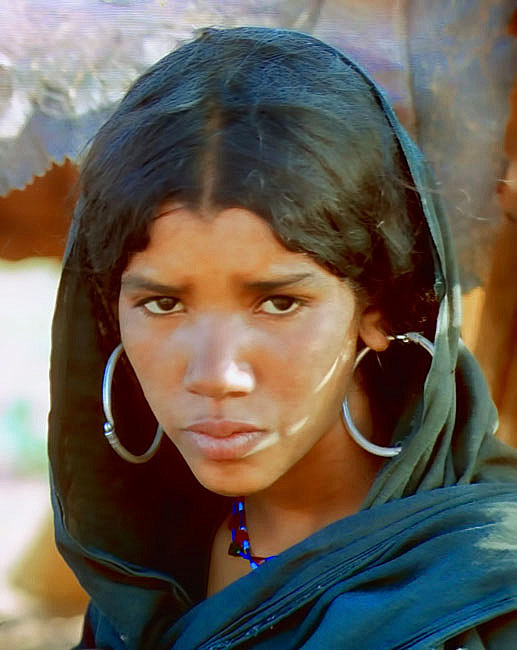


quote:It's not silly or psuedo scientific to see the possibility that Tuareg berbers might have been descended form Garamantes
Originally posted by Son of Ra:
This is the most silliest Pseudo-historic piece of sh*t that I've ever read...
The Garamantes were BERBERS!

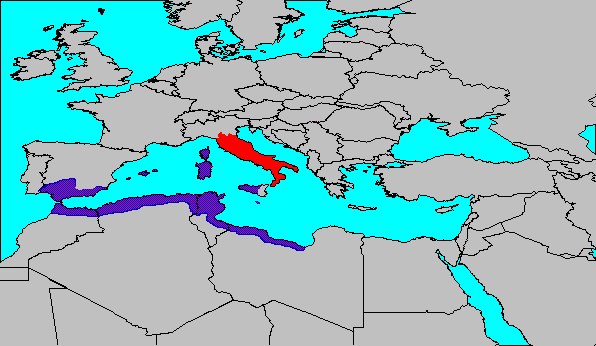
quote:Yeah, well Clyde Winters is more than just a pseudo-scholar. He is a psychopath! He claims 'Berber' is not native to Africa but introduced from somewhere else (Europe?!) even though it is part of the same language phylum as Chadic, Egyptic, and other Afrisian languages. Meanwhile he claims the Dravidian languages of India to be African [sic]!!
Originally posted by Son of Ra:
This is the most silliest Pseudo-historic piece of sh*t that I've ever read...
The Garamantes were BERBERS!
![[Eek!]](eek.gif) LMAO
LMAO ![[Big Grin]](biggrin.gif)
quote:LOl...Psychopath? Don't you think that's a bit harsh?
Originally posted by Djehuti:
quote:Yeah, well Clyde Winters is more than just a pseudo-scholar. He is a psychopath! He claims 'Berber' is not native to Africa but introduced from somewhere else (Europe?!) even though it is part of the same language phylum as Chadic, Egyptic, and other Afrisian languages. Meanwhile he claims the Dravidian languages of India to be African [sic]!!
Originally posted by Son of Ra:
This is the most silliest Pseudo-historic piece of sh*t that I've ever read...
The Garamantes were BERBERS!LMAO
![[Big Grin]](biggrin.gif)
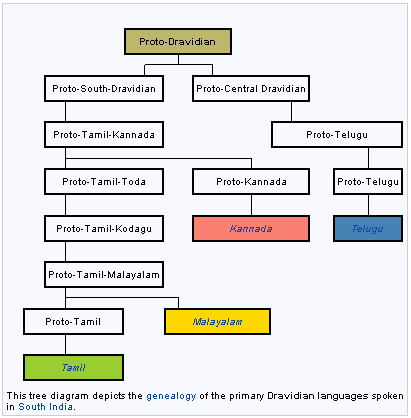
quote:Note however that the acorn is associated with both Garamas and Gara per Graves.
THE OLYMPIAN CREATION MYTH
At the beginning of all things Mother Earth emerged from Chaos
and bore her son Uranus as she slept.
. . .
b. Her first children of semi-human form were the hundred-handed
giants Briareus, Gyges, and Cottus.
. . .
c. The Libyans, however, claim that Garamas was born before the
Hundred-handed Ones and that, when he rose from the plain, he
offered Mother Earth a sacrifice of the sweet acorn.
quote:As you probably know, Garamantes aren't some distant Ancient entity who went up in smoke millennia ago, that it would be difficult to identify their ethnic origins. Their inhabitation of the Fezzan smoothly transitions into the common era and even up to the Islamic invasion of Northern Africa. This, in and of itself, makes links with indigenous inhabitants of the Fezzan (Tuareg) almost a no-brainer. I'd say 1) trephination going all the way back to Ibero-Maurusian times (where it is first recorded in history) and continuing into modern day Berber populations as well as 2) their ability to thrive in the hyper-arid desert are both strong identifying traits for this population. Especially the latter.
Originally posted by Tukuler:
I don't know about Garamantes being Berbers. Where
is the hard linquistic evidence for whatever forms of
speech they used? I have it there are grave markers
written by Garamantes. Can someone produce.
quote:Yes there are Fezzan continuities but'd like to see them mapped out.
The trephinations described in the present communication are in accordance with the archaeological evidence for the use of this practice in North Africa. Indeed, as mentioned previously, trephinations have been widely applied in Egypt and possibly in Nubia. However, the practice has never been reported in the central Saharan desert with the exception of the modern Tibu or Teda of Tibesti. To conclude, the trephinations among the Garamantes presented here are the first archaeological cases described from the Sahara. These examples add to the body of evidence that suggests the longterm and widespread use of cranial surgical techniques in North Africa.
Nikita 2011
Evidence of Trephinations among the Garamantes
quote:..... if you define Berbers as the Berber speaking population they got their language and most of their Y Chromosomes from, then yes. Not if you define them as the Ibero-Maurusian + Capsian substratum that their k-based and mtDNA TMRCAs suggests they are. If you look at the latter they're almost entirely comprised of this putative Ibero-Maurusian + Capsian ancestry. Its also interesting that the extremely high on Franco-Cantabrian refuge mtDNA H1 Libyan Tuaregs inhabit a region that's very close to the Easternmost territory of the Capsians. This too, seems to suggest very long (10kya) local ties of the Tuareg H, V based maternal genepool to the Western Libyan region.
Originally posted by Tukuler:
I see nothing peculiar about those traits especially the former
besides Maurusians bowing out millennia before taMazight existed.
quote:I'm not sure that the Tuareg ethno-genesis stretches that far back in time, though I may be wrong. I'm sure there is at least something to glean from looking at the populations who inhabit the Fezzan today, and slowly excluding unlikely matches like Arabs and Tebu who seem to have arrived later. How many non-Berber indigenous groups are there today in the Fezzan? Is there credence to maps like these?
Originally posted by Tukuler:
But please trace Fezzanis backwards from today to Garamante times.
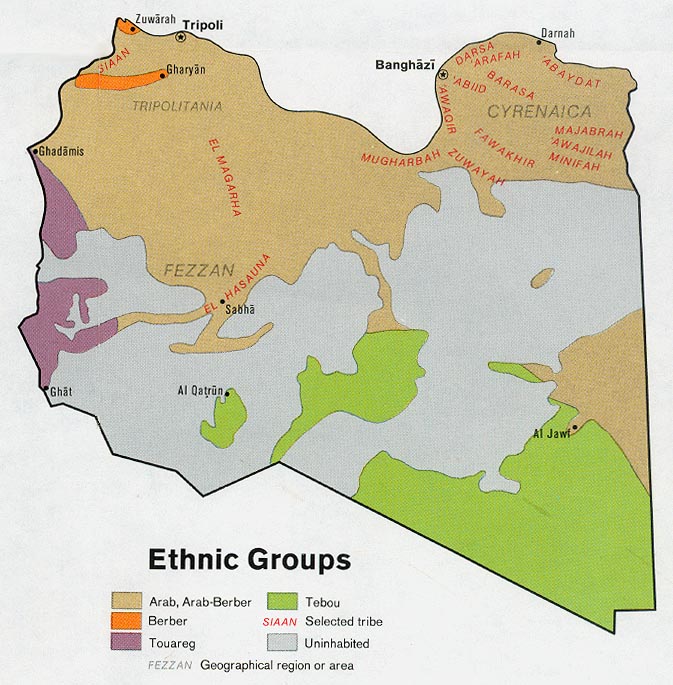


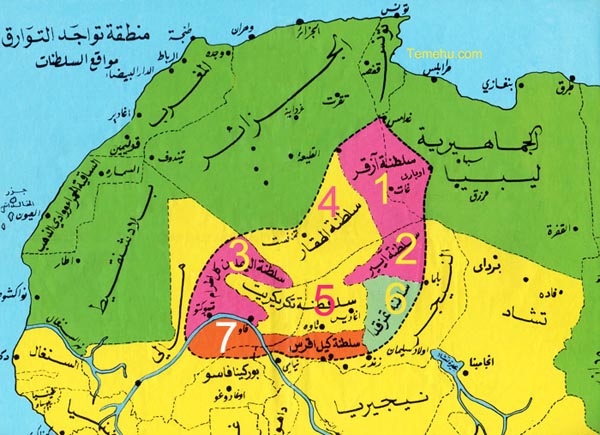 .
.


quote:Sure, but the point I'm trying to make is that your and Nikita et al's reservation to the idea that Garamantes and modern Berber speakers derive the practice of trephenation from their Epi-Palaeolithic predecessors in that region hinges on the suspicion that Maghrebi Epi-Palaeolithic ancestry doesn't persist in modern Berber speakers. That idea is not founded on current understandings of what Berber speakers are.
Originally posted by Tukuler:
Imazighen are the people speaking Tamazight. That
is my definition. Before North Africans began to
speak Tamazight lects they were not "Berbers."
quote:Agree. It may have something to do with their late ethno-genesis. Kind of similar to how Palestinians think of themselves as Arabs and don't seem to have recollections of being inhabitants of events related to the Israelite state, even though their pre-medieval ancestors likely would have self identified as biologically Jewish or something akin to it.
Originally posted by Tukuler:
Kel Tamasheq ethno-genesis is post Garamantia.
I haven't read any origin mythos by them that
remembers anything like Garamantia a solid and
extensive political state.
quote:I guess that goes back to what I said earlier, re: what one considers Tuareg to be. Are they predominantly a continuation of their >10ky old mtDNA H1, M1 and V ancestors or of their ~5kya E-M81 ancestors? If one goes with the former scenario, as I'm inclined to for obvious reasons, then they hands down pre-date Tebu in the wider area.
Originally posted by Tukuler:
I don't see Teda entering Fezzan any later than
the Kels. I guess that map is as good as any.
Does it jibe with other similar maps? There's
some Xian missionary group very concerned with
African ethnic groups. Maybe I'm simple to do
it but I value their ethnic maps because the
time they put in the field and the stakes they
place in what they do.
code:6.1 Dravidian and Senegalese. Cheikh T. N'Diaye (1972) and U.P. Upadhyaya (1976) have firmly established the linguistic unity of the Dravidian and Senegalese languages. They present grammatical, morphological, phonetic and lexical parallels to prove their point.COMMON INDO-AFRICAN TERMS
ENGLISH DRAVIDIAN SENEGALESE MANDING
MOTHER AMMA AMA,MEEN MA
FATHER APPAN,ABBA AMPA,BAABA BA
PREGNANCY BASARU BIIR BARA
SKIN URI NGURU,GURI GURU
BLOOD NETTARU DERET DYERI
KING MANNAN MAANSA,OMAAD MANSA
GRAND BIIRA BUUR BA
SALIVA TUPPAL TUUDDE TU
CULTIVATE BEY ,MBEY BE
BOAT KULAM GAAL KULU
FEATHER SOOGE SIIGE SI, SIGI
MOUNTAIN KUNRU TUUD KURU
ROCK KALLU XEER KULU
STREAM KOLLI KAL KOLI
code:Above we provided linguistic examples from many different African Supersets (Families) including the Mande and Niger-Congo groups to prove the analogy between Dravidian and Black African languages. The evidence is clear that the Dravidian and Black African languages should be classed in a family called Indo-African as suggested by Th. Obenga. This data further supports the archaeological evidence accumulated by Dr. B.B Lal (1963) which proved that the Dravidians originated in the Fertile African Crescent.English Senegalese Dravidian
body W. yaram uru
head D. fuko,xoox kukk
hair W. kawar kavaram 'shoot'
eye D. kil kan, khan
mouth D. butum baayi, vaay
lip W. tun,F. tondu tuti
heart W. xol,S. xoor karalu
pup W. kuti kutti
sheep W. xar 'ram'
cow W. nag naku
hoe W. konki
bronze W. xanjar xancara
blacksmith W. kamara
skin dol tool
mother W. yaay aayi
child D. kunil kunnu, kuuci
ghee o-new ney
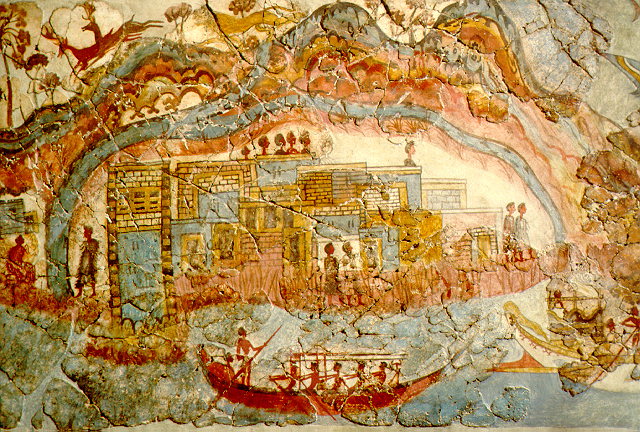





quote:^^^^ the above is from the following wikipedia entry
Originally posted by Swenet:
[/QB]

quote:Robert Graves:
Originally posted by Clyde Winters:
The Garamantes founded civilization in Minoa, or ancient Crete and the Fezzan.The Garamantes were Mande speakers not Berbers.
The Ancient Minoans: Keftiu were Mande Speakers.Every since Arthur Evans discovered the Hieroglyphic and Linear A writing of Crete there has been a search for the authors of this writing.
Some Grecian traditions indicate that Fezzanese(called Garamante) formerly lived on Crete. This suggest that some of the Eteocretans may have spoken one of the ancient languages of Libya.
A major group from Libya that settled Crete were the Garamante. Robert Graves in (Vol.1, pp.33-35) maintains that the Garamante who originally lived in the Fezzan fused with the inhabitants of the Upper Niger region of West Africa.

quote:
Originally posted by Clyde Winters:
Keftiu
The Egyptians called the Cretans Keftiu. There is agreement between the Keftiu names recorded by Egyptian scribes (T.E. Peet, "The Egyptian writing board BM5647 bearing Keftiu names". In , (ed.) by S Casson (Oxford, 1927, 90-99)), and Manding names.


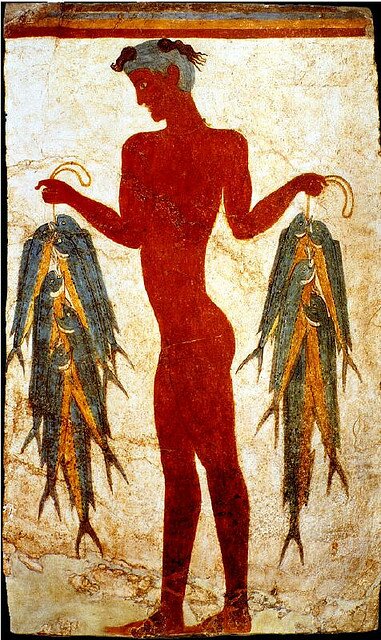




quote:Clyde what is the relationship, if any, between Arabic language and Indo-European language?
Originally posted by Clyde Winters:
The Berber languages did not originate in East Africa. The Berber languages are related to Arabic--not Ge'ez etc.
The Berber languages are of Indo-European origin.
quote:This is a good book--but it is based on Eurocentric conjecure. European researchers have tried to link all the groups as one when they were different populations.
Originally posted by Firewall:
Has anybody read this book?
The Golden Age of the Moor.
I am reading some of for the first time,well at least the ancient libyan parts so far.
Here it talks about the Berbers,libyans,temehou,adyrmachidae etc..
Alot of info about early libyans or berbers.
PAGES 109 TO 131 AND BEYOND.
The Golden Age of the Moor
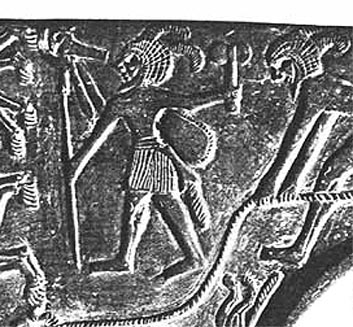




quote:Clyde there is no close relationship between Berber and German languages and what the Vandal spoke is not even known.
Originally posted by Clyde Winters:
Many researchers falsely states that the Berber speakers were Libyans. This is false, as proven by Diop (1977). Diop (1977) illustrates that the Berber genealogies place their origin in Saudi Arabia, and point to a very recent settlement(2000 years ago) in the Central Sahara. Diop (1977) believes that the Berbers are the result of the early mixture of Africans and Germanic speaking Vandals. (Diop 1986) This would explain the evident close relationship between the Berber and German languages.



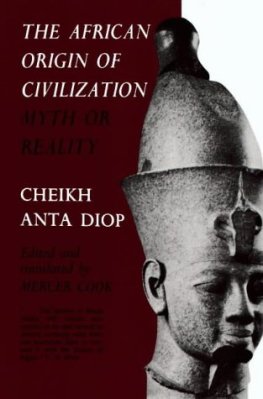



quote:Berber Languages
Originally posted by the lioness,:
quote:Clyde there is no close relationship between Berber and German languages and what the Vandal spoke is not even known.
Originally posted by Clyde Winters:
Many researchers falsely states that the Berber speakers were Libyans. This is false, as proven by Diop (1977). Diop (1977) illustrates that the Berber genealogies place their origin in Saudi Arabia, and point to a very recent settlement(2000 years ago) in the Central Sahara. Diop (1977) believes that the Berbers are the result of the early mixture of Africans and Germanic speaking Vandals. (Diop 1986) This would explain the evident close relationship between the Berber and German languages.
You are saying that Diop said berbers were a mixture of Africans and Germanics. If this is the case they the African component could have been Garamante
________________________________________
http://books.google.com/books?id=xdnrTM_d1GkC&pg=PA3&dq=libyan+berber&hl=

Vandals, Romans and Berbers: New Perspectives on Late Antique North Africa
edited by Andrew H. Merrills
.

quote:The Berber languages as pointed out by numerous authors is full of vocabulary from other languages. Many Berbers may be descendants of the Vandels (Germanic) speaking people who ruled North Africa and Spain for 400 years. Commenting on this reality Diop in The African Origin of Civilization noted that: “Careful search reveals that German feminine nouns end in t and st. Should we consider that Berbers were influenced by Germans or the referse? This hypothesis could not be rejected a priori, for German tribes in the fifth century overran North Africa vi Spain, and established an empire that they ruled for 400 years….Furthermore, the plural of 50 percent of Berber nouns is formed by adding en, as is the case with feminine nouns in German, while 40 percent form their plural in a, like neuter nouns in Latin.
http://www.nvtc.gov/lotw/months/july/berber.html
Introduction
The Berber, or Amazigh, people live in Northern Africa throughout the Mediterranean coast, the Sahara desert and Sahel which used to be a Berber world before the arrival of Arabs. Today, there are large groups of Berber people in Morocco and Algeria, important communitites in Mali, Niger and Libya, and smaller groups in Tunis, Mauritania, Burkina-Faso and Egypt. The Tuareg of the desert also belong to the Berber group. The Berber people speak 26 closely related languages.
Consonants
Berber consonants include:
glottalized consonants, so called because the space between the vocal cords (glottis) is constricted during their pronunciation;
implosive consonants produced with the air sucked inward;
ejective consonants produced with the air "ejected" or forced out;
geminate (doubled) consonants produced by holding them in position longer than for their single counterparts.
Click here to listen to a Berber song recorded in Morocco.
Grammar
Noun phrase
Berber nouns have two cases. One case is used for the subject of intransitive verbs, while the other is used for the subject of transitive verbs and objects of prepositions. There are two genders: masculine and feminine. The plural of nouns has a masculine and a feminine form.
Verb phrase
Verbs are marked for tense and aspect. The perfective of the verb is formed by reduplication of the second consonant of the root, or by the prefix -tt-.
Vocabulary
Most of the vocabulary is Berber in origin with borrowings from Latin, Arabic, French, Spanish, and other sub-Saharan languages. There is generally little or no intelligibility between the dialects.





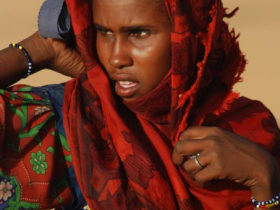





quote:The Berber languages as pointed out by numerous authors is full of vocabulary from other languages. Many Berbers may be descendants of the Vandels (Germanic) speaking people who ruled North Africa and Spain for 400 years. Commenting on this reality Diop in The African Origin of Civilization noted that: “Careful search reveals that German feminine nouns end in t and st. Should we consider that Berbers were influenced by Germans or the referse? This hypothesis could not be rejected a priori, for German tribes in the fifth century overran North Africa vi Spain, and established an empire that they ruled for 400 years….Furthermore, the plural of 50 percent of Berber nouns is formed by adding en, as is the case with feminine nouns in German, while 40 percent form their plural in a, like neuter nouns in Latin.
http://www.nvtc.gov/lotw/months/july/berber.html
Introduction
The Berber, or Amazigh, people live in Northern Africa throughout the Mediterranean coast, the Sahara desert and Sahel which used to be a Berber world before the arrival of Arabs. Today, there are large groups of Berber people in Morocco and Algeria, important communitites in Mali, Niger and Libya, and smaller groups in Tunis, Mauritania, Burkina-Faso and Egypt. The Tuareg of the desert also belong to the Berber group. The Berber people speak 26 closely related languages.
Consonants
Berber consonants include:
glottalized consonants, so called because the space between the vocal cords (glottis) is constricted during their pronunciation;
implosive consonants produced with the air sucked inward;
ejective consonants produced with the air "ejected" or forced out;
geminate (doubled) consonants produced by holding them in position longer than for their single counterparts.
Click here to listen to a Berber song recorded in Morocco.
Grammar
Noun phrase
Berber nouns have two cases. One case is used for the subject of intransitive verbs, while the other is used for the subject of transitive verbs and objects of prepositions. There are two genders: masculine and feminine. The plural of nouns has a masculine and a feminine form.
Verb phrase
Verbs are marked for tense and aspect. The perfective of the verb is formed by reduplication of the second consonant of the root, or by the prefix -tt-.
Vocabulary
Most of the vocabulary is Berber in origin with borrowings from Latin, Arabic, French, Spanish, and other sub-Saharan languages. There is generally little or no intelligibility between the dialects.





quote:But...
Sahara: Barrier or corridor? Nonmetric cranial traits and biological affinities of North African late Holocene populations.
Nikita E, Mattingly D, Lahr MM.
Source
Leverhulme Centre for Human Evolutionary Studies, Department of Biological Anthropology, University of Cambridge, Fitzwilliam Street, Cambridge, UK.
Abstract
"The Garamantes flourished in southwestern Libya, in the core of the Sahara Desert ~3,000 years ago and largely controlled trans-Saharan trade. Their biological affinities to other North African populations, including the Egyptian, Algerian, Tunisian and Sudanese, roughly contemporary to them, are examined by means of cranial nonmetric traits using the Mean Measure of Divergence and Mahalanobis D(2) distance. The aim is to shed light on the extent to which the Sahara Desert inhibited extensive population movements and gene flow. Our results show that the Garamantes possess distant affinities to their neighbors. This relationship may be due to the Central Sahara forming a barrier among groups, despite the archaeological evidence for extended networks of contact. The role of the Sahara as a barrier is further corroborated by the significant correlation between the Mahalanobis D(2) distance and geographic distance between the Garamantes and the other populations under study. In contrast, no clear pattern was observed when all North African populations were examined, indicating that there was no uniform gene flow in the region."

quote:so would you say that when Diop says in the following paragraph from the book that the berber speaking Tuareg were white he was mistaken?
Originally posted by Clyde Winters:
The Tuareg and Berbers are not the same. The Tuareg are an ancient African population which mated with the Vandals to form the present Berber population.



quote:Clyde Morroco is West of the Fezzan
Originally posted by Clyde Winters:
Tuareg territory
Originally posted by Clyde Winters:
This map represents the Tuareg region. The Tuareg did not come from the Fezzan, they originated in the East. According to Tuareg tradition they originated in the Tafilalt or Tafilet (Arabic: تافيلالت) an important oasis of the Moroccan Sahara, and migrated from there to the Fezzan.
quote:I have made clear in all of my work that M1 spread across Africa before the
Originally posted by the lioness,:
Clyde what about haplogroups M81 which are highest frequency in berbers
and U6 and/or M1 which are also high in many berbers?
Aren't there a lot of genetic studies that came after Diop passed?
Clyde and xyyman are at opposite extremes on this



quote:Most carriers of haplogroup M1 live in SubSaharan Africa--not North Africa
Originally posted by the lioness,:

^^^ CLyde look at all this M1 and U in berbers

quote:You are correct Morocco is west of the Fezzan.
Originally posted by the lioness,:
[QUOTE]Clyde Morroco is West of the Fezzan
East of the Fezzan is more of Libya and Egypt
The Tuareg or another group in the region would be likely to have descended form the Garmante but you can't prove they are or are not.
The Garmante don't have to speak berber in order for modern day berber speaking Tuareg to have descended from them because people can change languages.
But very little is known about Garamonte language.
The Romans notcied their script to have some similarities to Phoenician

quote:.
Originally posted by Swenet:
quote:Sure, but the point I'm trying to make is that your and Nikita et al's reservation to the idea that Garamantes and modern Berber speakers derive the practice of trephenation from their Epi-Palaeolithic predecessors in that region hinges on the suspicion that Maghrebi Epi-Palaeolithic ancestry doesn't persist in modern Berber speakers. That idea is not founded on current understandings of what Berber speakers are.
Originally posted by Tukuler:
Imazighen are the people speaking Tamazight. That
is my definition. Before North Africans began to
speak Tamazight lects they were not "Berbers."
quote:There are some Palestinians who claim Pelishti
Originally posted by Swenet:
Kind of similar to how Palestinians think of themselves as Arabs and don't seem to have recollections of being inhabitants of events related to the Israelite state, even though their pre-medieval ancestors likely would have self identified as biologically Jewish or something akin to it.
quote:.
Originally posted by Swenet:
quote:I guess that goes back to what I said earlier, re: what one considers Tuareg to be. Are they predominantly a continuation of their >10ky old mtDNA H1, M1 and V ancestors or of their ~5kya E-M81 ancestors? If one goes with the former scenario, as I'm inclined to for obvious reasons, then they hands down pre-date Tebu in the wider area.
Originally posted by Tukuler:
I don't see Teda entering Fezzan any later than
the Kels. I guess that map is as good as any.
Does it jibe with other similar maps? There's
some Xian missionary group very concerned with
African ethnic groups. Maybe I'm simple to do
it but I value their ethnic maps because the
time they put in the field and the stakes they
place in what they do.
Who are the Libyan Bedouins you're referring to? Isn't ''Bedouin'' a lifestyle related term, which may be applied to segments of all Libyan ethnic groups, rather than an ethnic term, or is it different in Libya?
quote:yes some haplgoups could correspond to anceint Germanic input.
Originally posted by Clyde Winters:
[QB]
This table just supports the view that the Berbers have mated with the ancient Africans who took L3(M,N) to Europe and North Africa (1-4). This genetic evidence does not prove that they were not of Germanic/Vandal origin.
quote:Nikita says that its ''most likely'' that modern Berbers and the Garamantes population attained the practice from the Nile Valley, likely because of what I said earlier; the tendency to see discontinuity between Epi-Palaeolithic Maghrebi populations and modern Berber populations. Can you specify what you mean with ''Tubu architecture'' and the significance of Tuareg in the Ghat region?
Originally posted by Tukuler:
I think many "Berbers," for the most part, descend
from pre-Berber Maurusians (who were relegated to
the littoral) and pre-Berber Gafsians (whose sites
were further inland). Nikita's trephination point is
it's practiced by Tubu today not by Kels. Tin Hanan
(whom Kel Ahaggar claim as "ancestress") her tomb
is Tubu architecture. Also those Kels in SW Fezzan's Ghat
moved there upon Qadhafi's invitation in the 1970's, iirc. [/QB]
quote:They do? Didn't know that. From what I know from past inquiries into Palestinian and Jewish genetics, they're genetically mostly indistinguishable. This is no surprise. Almost all origin legends, especially told by non-peninsular ''Arab'' populations, that aren't in line with them primarily originating in their current location, are usually made up or only applicable to a minuscule minority.
Originally posted by Tukuler:
There are some Palestinians who claim Pelishti
ancestry which would make them Aegean settlers
and so still not supporting claims of being the
original land holders.[/QB]
quote:Contrary to the M1, H1 and V lineages I've mentioned, the L mtDNAs you're listing haven't been properly sorted into recent (slave trade) heritage and ancient heritage. Additionally, in Fezzan Tuaregs they're the minority. Also, many L lineages are not recurrent in various Tuareg samples. One would expect the recurrent lineages in North, South, West and East Tuaregs to be representative of Tuareg specific heritage. H1, M1 and V clearly fit this picture, so how would my preference for using them for this purpose qualify as a priori and biased?
Originally posted by Tukuler:
Quite plainly there were no Kels before ~1700 years
ago. They are of multiple ancestries which for Fezzani
"Tuaregs" includes L0a1 L1b1 L2a (L2a1 L2a1a) L2b
L3e (L3e1* L3e2 L3e2b L3e3 L3f) L3w and M1 not just
biasedly preferred Eurasian markers (due to a priori
assumptions that only those of Eurasian mtDNA's can
be the real true North Africans).
quote:Look! If you're going to keep plagiarizing me get it right
Originally posted by the lioness,:
the Robert Graves quote
quote:'Berber' is a linguisto-cultural group encompassing many different ethnicities. The Tuareg or Tamashek is just ONE of those ethnicities! Also the Tuareg have nothing to do with the Vandals.
Originally posted by Clyde Winters:
The Tuareg and Berbers are not the same. The Tuareg are an ancient African population which mated with the Vandals to form the present Berber population.

quote:
Tuareg territory

quote:
Originally posted by Djehuti:
Even though this thread was created by Clyde, I see no point in arguing with the thread author as he is beyond reason.
quote:I'm confused. Graves seems to identify the Garama with a goddess in Anatolia and Greece. How true is this, or is Graves merely making wild speculations on etymology or rather typology of the word? Also, you say the Hekatonchieres (hundred-handers) are connected with Libyo-Thracians. So this means both Libyans and Thracians? How so, and what is the connection between these two people?? By the way, I thought the Greek legend was that the Aegean Sea was named after the Mycenaean king Aegeus (father of Theseus) though the Anatolian version is that it was named after one of the founding Amazon Queens Aegea, (daughter of Helios the sun and Perse the Oceanid; sister of Kirke, Pasiphae, Aeëtes, Persus, and Aloeus;).
Originally posted by Tukuler:
quote:Look! If you're going to keep plagiarizing me get it right
Originally posted by the lioness,:
the Robert Graves quote
================
THE OLYMPIAN CREATION MYTH
At the beginning of all things Mother Earth emerged from Chaos
and bore her son Uranus as she slept.
. . .
b. Her first children of semi-human form were the hundred-handed
giants Briareus, Gyges, and Cottus.
. . .
c. The Libyans, however, claim that Garamas was born before the
Hundred-handed Ones and that, when he rose from the plain, he
offered Mother Earth a sacrifice of the sweet acorn.
. . . .
1. This patriarchal myth of Uranus gained official acceptance
under the Olympian religious system.
...
Briareus ('strong') was also called Aegaeon, and his people may
therefore be the Libyo-Thracians, whose Goat-goddess Aegis gave
her name to the Aegean Sea.
Cottus was the eponymous ancestor of the Cottians who worshipped
the orgiastic Cotytto, and spread her worship from Thrace through
out North-western Europe. These tribes are described as 'hundred
handed', perhaps because their priestesses were organized in
colleges of fifty, like the Danaids and Nereids; ...
. . .
. . . .
3. Garamas is the eponymous ancestor of the Libyan Garamantians
who occupied the Oasis of Djado, south of the Fezzan, and were
conquered by the Roman general Balbus in 19 B.C. They are said
to have been of Cushite-Berber stock, and in the second century
A.D. were subdued by the matrilineal Lemta Berbers. Later they
fused with the Negro aboriginals on the south bank of the Upper
Niger, and adopted their language.
They survive today in a single village under the name of Koromantse.
Garamante is derived from the words gara man te meaning 'Gara state
people'.
Gara seems to be the goddess Ker, or Q're, or Car, who gave her
name to the Carians, amog other people, and was associated with
apiculture. Esculent acorns, a stape food of the ancient world
before the introduction of [grains], grew in Libya; and the
Garamantian settlement of Ammon was joined with the Northern
Greek settlement of Dodona in a religious league which, according
to Sir Flinders Petrie, may have originated as early as the third
millenium B.C.
Both places had an ancient oak-oracle. Herodotus describes
the Garamantians as a peaceable but very powerful people,
who cultivate the date-palm, grow [grain], and herd cattle.
Robert Graves
The Greek Myths
New York: George Braziller, Inc., 1959 (edition)
vol. 1 pp. 31-33
Read more: http://egyptsearchreloaded.proboards.com/thread/116/forgotten-garamante-kingdom?page=4#ixzz2YPUO4n1T


![[Embarrassed]](redface.gif)











quote:.
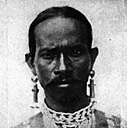
A Speaker of the Tulu Dravidian Language
2009
In a small discrete village of Majur, around three kilometres from Kaup on the road to Shirva, adjacent to 300 years old temple of Shri Durga Parameshwari, lives an elderly couple-Dr. Uliyar Padmanabha Upadhyaya (76 years) and Dr. Susheela P Upadhyaya (73 years). When i met them in mid-August they appeared to be frail, simple, unassuming, friendly and warm. After interacting with them for two hours, i had nothing but awe, admiration and reverence to this great couple whose scholarship in linguistics and folk culture especially that of the Tulunadu has been appreciated by scholars not only in India but also in Europe, America and Africa. Their monumental contribution to the Tulu language is the Tulu Lexicon (Tulu Nighantu) in six volumes, which they value the most as their labour of love and sacrifice. Besides, this significant work, their numerous research books and articles on the folk culture and literature of Tulunadu has enriched the Tuluva heritage.
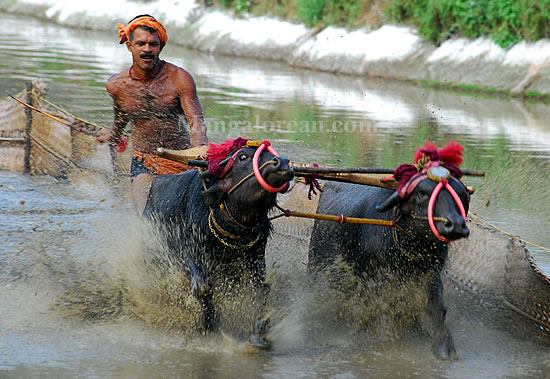
quote:It was between 1500 and 1200 B.C. that the Dravidian Albinos who had originally migrated from Africa into India and then continued North into Central Asia, to escape the Burning Sunshine found at lower latitudes returned to India.
Originally posted by Clyde Winters:
Only Euronuts and their negro and asian flunkies believe the Dravidians did not come from Africa.
quote:.
Originally posted by Djehuti:
I am very much interested in what info you have on the Garamantes.
quote:
Originally posted by Tukuler:
THE OLYMPIAN CREATION MYTH
in
Robert Graves
The Greek Myths
New York: George Braziller, Inc., 1959
Chapter 3 (in any edition)
quote:.
Originally posted by Djehuti:
... you say the Hekatonchieres (hundred-handers) are connected with Libyo-Thracians.
quote:.
... is Graves merely making wild speculations on etymology or rather typology ...
quote:.
Graves seems to identify the Garama with a goddess in Anatolia and Greece. How true is this,
quote:.
Libyo-Thracians. So this means both Libyans and Thracians? How so, and what is the connection between these two people??
quote:.
THE BIRTH OF ATHENE
According to the Pelasgians, the goddess Athene was born beside
Lake Tritonis in Libya, where she was found and nurtured by the
three nymphs of Libya, who dress in goat-skins. ... Coming to
Greece by way of Crete, she lived in the city of Athenae by the
Boetian river Triton.
1. Plato identified Athene, patroness of Athens, with the Libyan
goddess Neith, who belonged to an epoch when fatherhood was not
recognized. Neith had a temple at Sais, where Solon was treated
well merely because he was an Athenian.
...
The aegis, however, a magical goat-skin bag containing a serpent
and protected by a Gorgon mask, was Athene's long before Zeus
claimed to be her father. Goat-skin aprons were the habitual
costume of Libyan girls, ... Herodotus writes" 'Athene's garments
and aegis were borrowed by the Greeks from the Libyan women, who
are dressed in exactly the same way, except that their leather
garments are fringed with thongs not serpents.' Ethiopian girls
still wear this costume, which is sometimes ornamented with cowries,
a yonic symbol. Herodotus adds here that the loud cries of triumph,
olulu, olulu, uttered in honour of Athene [in the Illiad 6.297-301]
were of Libyan origin. ...
2. Pottery finds suggest a Libyan immigration into Crete as
early as 4000 BC; and a large number of goddess-worshipping
Libyan refugees from the Western Delta seemed to have arrived
there when Upper and Lower Egypt were forcefully united under
the 1st Dynasty about the year 3000 BC. The 1st Minoan Age
began soon afterwards, and Cretan culture spread to Thrace
and early Hellenic Greece.
quote:.
Acacallis was Apollo's first love; ... he found
Acacallis at the house of Carmanor, ... and
seduced her. minos was vexed, and banished
Acacallis to Libya where, some say, she became
the mother of Garamas, though others claim that
he was the first man ever born.
quote:.
I thought the Greek legend was that the Aegean Sea was named after the Mycenaean king Aegeus
quote:The Garama in the above citation is the guy who's mum
Garamantes populi Africae prope Cyrenas
inhabitantes, a Garamante rege Apollinis
filio nominati, qui ibi ex suo nomine Garama
oppidum condidit.
Isidori Hispalensis Episcopi
Etymologiarum sive Originum
9.2.125
quote:In his view the root arhrham, which is in all 'Berber' dialects is the
Le nom même des Garamantes signifierait « les gens des maisons ». La racine arhrham ,
« maison, construction », est une racine pan-berbère. Les nombreuses ruines de l'oued
El-Agial témoignent en faveur de cette hypothèse.
quote:
One of the interesting questions to be resolved is
whether the language of the Garamantes was a Berber
tongue or an early form of Tibu, a Saharo-Sahelian
language spoken then as now in the adjacent Tibesti
Mountains just south of the Fezzan.
Civilizations of Africa p.222
quote:
We hypothesize that the differences in animal resources
between the northern and southern Sahara during the early
Holocene influenced the way it was peopled by humans. The
north–south contrast in Saharan species ranges are remarkably
similar to some key lithic, bone tool, and linguistic spatial
distributions, suggesting that the peopling of the region
during the early Holocene humid phase was driven by cultural
adaptations that allowed exploitation of specific fauna.
The early Holocene archaeology of the Sahara is characterized
by a regional distribution of specific archaeological cultures,
such as those defined by barbed bone points, fishhooks, Ounanian
arrow-points, and, more controversially, pottery (32, 35–38).
The Sahara today is largely populated by speakers of Afroasiatic
languages, Berber and Arabic, with some Nilo-Saharan languages
(Teda-Daza and Zaghawa) in the region of Northern Chad, and
Songhay cluster languages scattered across Mali and Niger
(Fig. 3). However, it is clear that this situation is recent;
Berber speaking Tuareg moved into the Central Sahara ~1500 y
ago ... Before this time, the central and southern Sahara are
thought to have been populated by Nilo-Saharan speakers.
quote:I provided a quote from Nikita2011 Evidence
Originally posted by Swenet:
Nikita says that its ''most likely'' that modern Berbers and the Garamantes population attained the practice from the Nile Valley, likely because of what I said earlier; the tendency to see discontinuity between Epi-Palaeolithic Maghrebi populations and modern Berber populations.
quote:.
In North Africa, we find the earliest evidence of
trephinations in the world. For example, there were
three trephined skulls from the Epipalaeolithic site
of Taforalt, Morocco (12000–11000BC), and two
from Afalou-bou-Rhumel, Algeria (8500–6500BC).
The practice continued into later archaeological periods
among the Egyptians. Evidence of trephinations
has been found in one skull from the 12th Dynasty at
Lisht, a 17th–19th Dynasty man from Sesebi, a
27th Dynasty young individual (12–13years) from
Dakhleh Oasis, an adult man from Saqqara
and others. In addition to the aforementioned evidence,
the Edwin Smith papyrus shows that the Egyptians
had a good understanding of neuroanatomy and
head injuries. Outside Egypt, this form
of surgery is rather rare in North Africa, with very few
exceptions. For example, a trephined skull was found
in the 1st millennium BC site of Roknia, Algeria. Another one was documented in
an Egyptian fort in Nubia, although it is not clear
whether the individual exhibiting the lesion was an
Egyptian or a Nubian. Finally, there
is a questionable case of a female from Meroe. In modern times, the practice became common
among Berber groups in order to relieve problems of
headaches following injuries or disease. More specifically, populations known to have
practised trephinations in the 19th–20th centuries are
the Chaouïa Berbers from Algeria, the neighbouring Arab community from El
Kantara and the Tibu or Teda
of the Tibesti.



quote:Sure, but given the peculiarity of the practice, the ancestral continuity of the prehistoric and modern Maghrebi populations in question, as well as the repeated occurrences of the practice in Algeria in both Epi-Palaeolithic times and Iron age, I think it makes more sense to think of it as continuation rather than who knows how many independent innovations in the same expansive region. Unless we're of the mindset that the Maghrebi cranium collections excavated so far represent every soul ever born in the Maghreb, I'm not at all convinced that the apparent absence of the this practice in preserved craniums after the Epi-Palaeolithic can be used as evidence that it was absent.
Originally posted by Tukuler:
Nikita is simply giving the locations
through time where trephinated skulls
in fact exist not merely postulated.
It's a long time from Gafsian culture
to the Garama federation without any
trephinated skulls in the chotts or
desert in between Gafsa and Fezzan
The shortest line timewise is Nile
to Fezzan.
quote:Archaeologically and phenotypically, ''Proto-Mediterranean'' Capsian populations gradually transitioned into modern Maghrebi populations (I'm avoiding 'Berber' so as to not solicit any more distractions about who or what Berber speakers are). There are several thousand years in between terminal Capsian and the Garamantes kingdom. What exactly is against Tunisian post Capsian cultured populations gradually settling the Fezzan? I mean, Neolithic Capsian populations already permeated into Northern Libya. See my aforementioned references to Tunisian and Tuareg Capsian associated mtDNA H and V lineages. As I've alluded to earlier, H1 so far has the highest Maghrebi diversity in Tunisia and the highest frequency in Fezzan Tuareg.
Originally posted by Tukuler:
Taforalt / Afalou-bou-Rhumel / Gafsa
are part of an Atlas world not the
Saharan world of Fezzan.
quote:We have debated this interpretation of Garamante before.
Originally posted by Tukuler:
Occurences of Greco-Latins appending nte to African ethnies.
Garama-ntes ____ Garamas
Alta-ntes ______ Atlas
The above two are a perfect match
Two more examples below
Atara-nte
Zyga-nte
Gamphaza-nte
Gyza-nte
-antes appears to be a Greco-Latin suffix.
Noun forming suffixes
Suffix __ Meaning ________ Origin
ant ____ thing or one who ____ Latin
ance ___ state of being ______ Latin
Garamante is the people, Garamantia the nation.
Again all this is from a non-African language base.
The African language(s) this is based on has the
word Garama/Djerma/Jerma (soft g like a j not a
hard g like in gate).
Since neither Garamas nor Garama have an nte
in them we conclude nte is a suffix not found on
the name of Garamas the eponymous ancestor
nor on Garama the city named after Garamas.
Thus the nte suffix holds well when appended
to Garama making Garama-nte mean those of
Garama(s) just as the Atla-nte are those of
Atlas.
quote:LOL. The fact remains that the Garamante were the founders of Cretan civilization. Evidence of the language spoken by these Garamante: Keftiu, is relevant to understanding the representatives of this tribe that remained in the Fezzan up to Roman times.
Originally posted by Tukuler:
It's not worth my time to get into this with
you here. Rather than embarass your lingual
skills here, anyone interested in the easy
dismisal of your "refutation" can find it @
http://egyptsearchreloaded.proboards.com/post/1574
ESR Forgotten Garamantes page3 5th post from bottom
Again the simple timeline of Minoa vs Garama
proves Crete was finished hundred of years
before Garamantia started.
quote:Ptolemy does not mention a people called Garamas, he said the Tedamansii tribe was related to the Garamantes people. web page
Originally posted by Tukuler:
No Tuareg ethnic group(s) existed until after
Garama was finished. It's anachronistic to
speak of ancient and pre-historic North African
genetics in terms of Tuareg instead of what it
really is the generic genetics of a very broad
region in Africa where by the late Holocene
many distinct ethnies began forming up until today.
To the best of my meager knowledge the Kel
came into existence when people at the NW
coast of what today is Libya (Tripolitania
as the Greeks named this region) fled in
the face of Arab intrusion. Traveling south
they inhabited the Hoggar (Ahaggar after the
Hawara people, themselves immigrants later in
time than the Kels) mingling and mixing with
its inhabitants and other incoming peoples
to become "the Tuareg." At least this is the
majority Euro-centered take considering only
the northern or Sanhadja major phratry. Usually
ignored is the southern or banu Tanamak, the
other major phratry. Next to nothing cultural
aligns this 11th century ethny, Tuareg (both
phratries) to the Garama. Afaik, this applies
to Tubu too.
Thing is though, Ptolemy does mention one of
the Garamas people, Tedamansii, hundreds
of years before a people known as Targui
are first recorded, Targa being another
name for oasis Fezzan sites (though if
targa simply means garden I can't see
how it only applies to Fezzan oases but
as far as my researching goes it does.).

quote:Hey my Fela, slow down. Go slow, go slow bruh. pt1
Originally posted by Swenet:
Your map only depicts early Capsian sites, not Neolithic/terminal Capsian sites extending well into Northern Libya. It doesn't even depict the full extent of Upper Capsian sites as the sites clearly don't go deep into Algeria.




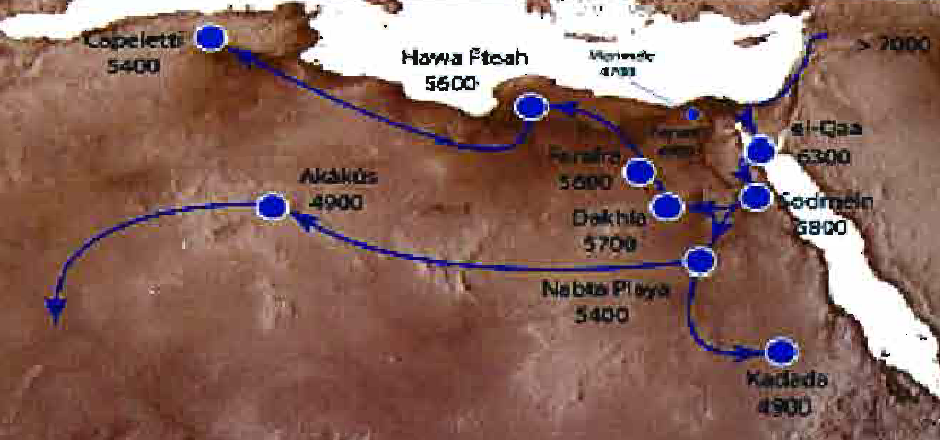
quote:Slow down. Go slow, go slow. pt2
Originally posted by Swenet:
I've referred several times now to mtDNA H1 and V and even asked you explicitly to address this genetic data that seemingly points to Capsian heritage in Tuareg, among others. Again, please give your take on this genetic evidence and what role you think it suggests for the Tuareg in the Tunisian/Libyan area, if not long term inhabitation.
quote:Slow down. Go slow, go slow. pt3
Originally posted by Swenet:
Was there technique diversity in the Algerian Epi-Palaeolithic, metal age and modern Algerian instances of trephination? Please specify. What I don't buy into is not something as trivial as the use of separate techniques, what I don't buy is that the (idea of the) practice itself was independently invented 3 times, in the Maghreb.
quote:Slow down. Go slow, go slow. pt4
Originally posted by Swenet:
You say you're sticking to a Tassili/Acacus/Fezzan Garamante continuum but at the same time seem to oppose Tuareg links to the Garamantes kingdom.
quote:I am curious if they may have been Songhai/Sonrai. They came from the north originally. Well all Mande did, but I am really curious to know if it could be them who had that kingdom.
Originally posted by Clyde Winters:
Sources agree that Garama was name of their capital city. Garamante was the name for the tribe.
Garama was the name of the capital city of the Garamantes. Pliny the Elder wrote"clarissimumque Garama caput Garamantum, the "well known Garam capital, of the Garamantes".
See:
www.saudiaramcoworld.com/issue/20....ert.kingdom.htm
A major group from Libya that settled Crete were the Garamante. Robert Graves in (Vol.1, pp.33-35) maintains that the Garamante who originally lived in the Fezzan fused with the inhabitants of the Upper Niger region of West Africa.
The name Garamante, illustrates affinity to Mande morphology and grammar. The Mande language is a member of the Niger-Congo group of languages. The name for the Manding tribe called "Mande", means Ma 'mother, and nde 'children', can be interpreted as "Children of Ma", or "Mothers children " (descent among this group is matrilineal) . The word Garamante,can be broken down into Malinke-Bambara into the following monosyllabic words Ga 'hearth', arid, hot'; Mante/Mande , the name of the Mande speaking tribes. This means that the term: Garamante, can be interpreted as "Mande of the Arid lands" or "Arid lands of the children of Ma". This last term is quite interesting because by the time the Greeks and Romans learned about the Garamante, the Fezzan was becoming increasingly arid.
quote:Slow down. Go slow, go slow. pt5
Originally posted by Swenet:
What modern Libyan ethnic group would this Tassili/Acacus/Fezzan mix translate into, and would this amalgam not contradict your link of the Garamantes with the Tebu, who are clearly a Chadic population, with Chadic ancestry? You also mentioned Tebu tomb architecture as far West as South Central Algeria, please specify how you've come to this conclusion. [/QB]


quote:
Originally posted by Tukuler:
Besides Tubu genetics, Haratin genetics is
also vital in understanding the genetic
history of the Sahara. Raise a cup to us
staying alive until such reports appear.
The field still accept Cavalli-Sforza's
classical nuclear markers defining Beja
(Cushitic) Tuareg (Berber) high affinity.
(Begin reading Cavalli-Sforza1994 p172here)
He posits a 5k split between the two. If
this map is correct Chadic and Berber do
originate near the same geography in line
with Ehret's proto-Chado-Berber.
Initial routing on the map can show movement
of the Beja Cushitic ancestral component in
Tuareg along the same corridor as Chado-Berber
expansion. And WNW bound Nilo-Saharan utilized
this same route. Tubu are Nilo-Saharans.
No major migration was necessary and the
further from the initial contact points
the less of the E Africans. No E Africans
at all needed to be at furthest points of
the language shift of Cushitic Beja to
Tuareg Tamasheq and further on to "Berber."
E African mtDNA would thin out from Tschad
to Fezzan being totally absent in the
Maghreb and language shift still works.
But note Tishkoff2009's STRUCTURE analysis
Fig S13 show Beja and Mzabi essential not
distinct with Beja more E African and Mzabi
more Eurasian.
East African mtDNA in Fezzani Tuareg likely
represents the deme bearing the lect that
North Africans adopted, a proto-language
introduced from W Sudan.
quote:How? Please explain. The 10kya Iberian migration embodied by H1 is very specific and, in its diversity, frequency and TMRCA matches Capsian site distribution. The Tuareg come to the fore as strongly (but not exclusively) defined by this component. That their ethnogenesis is recent has no bearing on this. Ancestry informative markers transcend plastic and petty human made divisions like ethnogenesis, religion, self-identity et al.
Originally posted by Tukuler:
It's anachronistic to
speak of ancient and pre-historic North African
genetics in terms of Tuareg instead of what it
really is the generic genetics of a very broad
region in Africa where by the late Holocene
many distinct ethnies began forming up until today.
quote:So, you think the simplicity of ''just poking a hole'' dictates that it's more likely that Northern Algerian populations invented the practice independently, in Epi-palaeolithic, Metal age and modern times, even though there is biological continuity from all three time periods? I've never come across descriptions of trephination as marginalized as you describe it here. It is generally conceptualized as a surgical practice that is reflective of considerable anatomical awareness, especially when those having undergone this practice display signs of healing. Indeed, while Nikita et al and I disagree about the provenance of this practice, she agrees that its peculiar enough to act as a diffusion marker.
Originally posted by Tukuler:
How hard is it to think of relieving pressure
from something by poking a hole in it? That's
the idea that was applied to human skulls by
the most primitive of people the Maurusians
to modern day people coastal Berbers, Tubu,
etc. But the idea never caught on with Tuareg.
quote:I could have sworn that you maintained that the Tuareg were relatively recent arrivals in the Central Sahara, being preceded by Nilo-Saharan speakers in this region.
Originally posted by Tukuler:
I have absolutely no idea where you ever read me
saying anything even remotely resembling that.
quote:This has never been reproduced AFAIK, and neither have the many other links (Nubian-Moroccan, Biaka-Sara, San-Somali). I'm not denying that the results are authentic, just that the used variables aren't very powerful as judged by it's fruits. The K-based, mtDNA and Y Chromosomal analysis have consistently and repeatedly tied all Berbers together (including the Tuareg, in the latter two types of analysis), yet, they're all over the place in this analysis.
Originally posted by Tukuler:
The field still accept Cavalli-Sforza's
classical nuclear markers defining Beja
(Cushitic) Tuareg (Berber) high affinity.
(Begin reading Cavalli-Sforza1994 p172here)
He posits a 5k split between the two. If
this map is correct Chadic and Berber do
originate near the same geography in line
with Ehret's proto-Chado-Berber.
quote:Since they're Nilo-Saharan speakers of the Saharan branch, tied linguistically with the likes of the Kanembu and other Chadian populations. All Chadic speakers and Nilo-Saharan speakers who aren't recent arrivals in Chad have so far tested positive for this ancestry. Certain Cameroonian populations from Chad also have tested positive for this ancestry. See Tishkoff 2009. They also mostly have little to high Y T-M184 and/or R-V88 (including the Toubou, per Spencer Wells), like many other Chadic and Chadic admixed populations.
Originally posted by Tukuler:
Since when are Tubu "clearly a Chadic population, with Chadic ancestry"?
quote:No. They are suppose to have migrated to the Niger Delta region
Originally posted by the lioness,:
Clyde, people in North Africa who are not Arab are generally called berber.
Therefore if the Garamante did not speak berber some of the the descendants of the Garamante might speak berber or Arabic today and have ancestry from the Garamantes.
This is possible. You think they just disappeared off the face of the earth?
A population sometimes adopts new languages
quote:I rarely dialogue with you and never with the racist Djehuti because you fail to have the background to discuss many issues from diverse perspectives. You rarely critically evaluate the research you use and, practice a form of "authority research", that is research based upon the belief that whatever an authority writes is valid and reliable.
Originally posted by Tukuler:
Clyde I already wrote about the Tin Hinan
from Tafilalet Morocco Tuareg origin myth.
Did you bother to click the link I gave to
Cavalli-Sforza and his take on Tuareg and
Beja commonality?
No? Why not?
Because it's outside your holy ideaology dogma
just like the Minoa vs Garama timeline debunk.
How you decide data is valid? Simple. If it
contradicts your dogma its invalid, never
mind how ridiculous your ideaology is.
That's why I can't take you seriously and
hardly bother to dialogue with you. I may
as well talk to the hand as present you
with facts you just don't want to hear.
So my stuff is primarily directed to the
ES membership and lurkers as well as drop
by surfers randomly looking for info and
so wind up here.

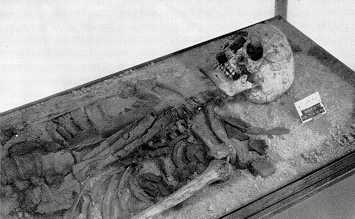

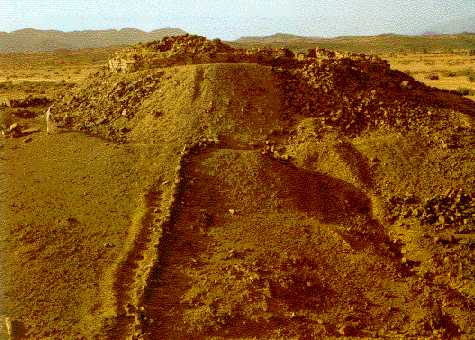
quote:Sanhaja Berbers played a prominent role in the spread of Islam in the Niger Delta region.
Originally posted by Clyde Winters:
quote:No. They are suppose to have migrated to the Niger Delta region
Originally posted by the lioness,:
Clyde, people in North Africa who are not Arab are generally called berber.
Therefore if the Garamante did not speak berber some of the the descendants of the Garamante might speak berber or Arabic today and have ancestry from the Garamantes.
This is possible. You think they just disappeared off the face of the earth?
A population sometimes adopts new languages
.

quote:I would be very interested in the Sanhaja DNA. I believe most of the members of the tribe during the various jehadi movements migrated to Iberia and spread many African haplogroups.
Originally posted by the lioness,:
quote:Sanhaja Berbers played a prominent role in the spread of Islam in the Niger Delta region.
Originally posted by Clyde Winters:
quote:No. They are suppose to have migrated to the Niger Delta region
Originally posted by the lioness,:
Clyde, people in North Africa who are not Arab are generally called berber.
Therefore if the Garamante did not speak berber some of the the descendants of the Garamante might speak berber or Arabic today and have ancestry from the Garamantes.
This is possible. You think they just disappeared off the face of the earth?
A population sometimes adopts new languages
.
The Sanhaja or Senhaja (also Zenaga, Znaga or Sanhadja; were once one of the largest Berber tribal confederations of the Maghreb, along with the Zanata and Masmuda.After the arrival of Islam they also spread out to the borders of the historic Sudan as far as the Senegal River and the Niger. From the 9th century Sanhaja tribes were established in the Middle Atlas range, in the Rif Mountains and on the Atlantic coast of Morocco. A part of the Sanhaja were settled in central/eastern Algeria and northern Niger such as the Kutama, and played an important part in the rise of the Fatimids. The Sanhaja dynasties of the Zirids and Hammadids controlled Ifriqiya until the 12th century.
The descendents of the Sanhaja are found today in the Middle-Atlas and eastern Morocco, the Tuaregs Kutama in northern Niger and Mali[citation needed] across the Sahara, in addition to the Kutama of Kabylie in Algeria (Ketama)
-wiki
Tuareg woman of Niger

quote:--Beniamino Trombetta et al. (2010)
"Firstly, haplogroup E-M2 (former E1b1a) and haplogroup E-M329 (former E1b1c) are now united by the mutations V38 and V100, reducing the number of E1b1 basal branches to two. The new topology of the tree has important implications concerning the origin of haplogroup E1b1. Secondly, within E1b1b1 (E-M35), two haplogroups (E-V68 and E-V257) show similar phylogenetic and geographic structure, pointing to a genetic bridge between southern European and northern African Y chromosomes. Thirdly, most of the E1b1b1* (E-M35*) paragroup chromosomes are now marked by defining mutations, thus increasing the discriminative power of the haplogroup for use in human evolution and forensics."
[...]
Within E-M35, there are striking parallels between two haplogroups, E-V68 and E-V257. Both contain a lineage which has been frequently observed in Africa (E-M78 and E-M81, respectively) [6], [8], [10], [13]–[16] and a group of undifferentiated chromosomes that are mostly found in southern Europe (Table S2). An expansion of E-M35 carriers, possibly from the Middle East as proposed by other Authors [14], and split into two branches separated by the geographic barrier of the Mediterranean Sea, would explain this geographic pattern. However, the absence of E-V68* and E-V257* in the Middle East (Table S2) makes a maritime spread between northern Africa and southern Europe a more plausible hypothesis. A detailed analysis of the Y chromosomal microsatellite variation associated with E-V68 and E-V257 could help in gaining a better understanding of the likely timing and place of origin of these two haplogroups.



quote:So they have more paternal genetic ancestry related to West Africans than to East Africans?
Originally posted by Clyde Winters:
Tuareg and Berbers were not Northeast African people The Tuareg did not come from the Fezzan, they originated in the West.
quote:Clyde is right,
Originally posted by the lioness,:
quote:So they have more paternal genetic ancestry related to West Africans than to East Africans?
Originally posted by Clyde Winters:
Tuareg and Berbers were not Northeast African people The Tuareg did not come from the Fezzan, they originated in the West.
quote:http://anthropology.net/2008/08/14/the-kiffian-tenerean-occupation-of-gobero-niger-perhaps-the-largest-collection-of-early-mid-holocene-people-in-africa/
This site has been called Gobero, after the local Tuareg name for the area. About 10,000 years ago (7700–6200 B.C.E.), Gobero was a much less arid environment than it is now. In fact, it was actually a rather humid lake side hometown of sorts for a group of hunter-fisher-gatherers who not only lived their but also buried their dead there. How do we know they were fishing? Well, remains of large nile perch and harpoons were found dating to this time period.
quote:Have you come across any studies comparing Songhay/Sonrai to amazigh language?
Originally posted by Djehuti:
^ We've told crazy Clyde this how many times now and on how many threads for the past years he's been posting in this forum, yet he refuses to accept the FACTS and clings on to this silly lie that Berber originated in Europe even though there is NO evidence that Berber was ever spoken in Europe as a native language.
Doug, I don't know what those videos on Ethiopia has anything to do with the issue but you are right that Berber languages are related to Ethiopian and Egyptian languages but apparently close to Chadic languages like Hausa in Nigeria as well!
By the way, here are some past threads on Garamantes:
Garamantes nonmetric traits
the Garamantes a ancient african civilization in the sahara/north africa
A Garamante origin to the Egyptian society?
Clyde needs to stop with the nonsense.![[Embarrassed]](redface.gif)
quote:No. Taureg is related. .
Originally posted by typeZeiss:
quote:Have you come across any studies comparing Songhay/Sonrai to amazigh language?
Originally posted by Djehuti:
^ We've told crazy Clyde this how many times now and on how many threads for the past years he's been posting in this forum, yet he refuses to accept the FACTS and clings on to this silly lie that Berber originated in Europe even though there is NO evidence that Berber was ever spoken in Europe as a native language.
Doug, I don't know what those videos on Ethiopia has anything to do with the issue but you are right that Berber languages are related to Ethiopian and Egyptian languages but apparently close to Chadic languages like Hausa in Nigeria as well!
By the way, here are some past threads on Garamantes:
Garamantes nonmetric traits
the Garamantes a ancient african civilization in the sahara/north africa
A Garamante origin to the Egyptian society?
Clyde needs to stop with the nonsense.![[Embarrassed]](redface.gif)
quote:Are you then saying that Toureg are not Amazigh? What would you consider those people?
Originally posted by Clyde Winters:
quote:No. Taureg is related. .
Originally posted by typeZeiss:
quote:Have you come across any studies comparing Songhay/Sonrai to amazigh language?
Originally posted by Djehuti:
^ We've told crazy Clyde this how many times now and on how many threads for the past years he's been posting in this forum, yet he refuses to accept the FACTS and clings on to this silly lie that Berber originated in Europe even though there is NO evidence that Berber was ever spoken in Europe as a native language.
Doug, I don't know what those videos on Ethiopia has anything to do with the issue but you are right that Berber languages are related to Ethiopian and Egyptian languages but apparently close to Chadic languages like Hausa in Nigeria as well!
By the way, here are some past threads on Garamantes:
Garamantes nonmetric traits
the Garamantes a ancient african civilization in the sahara/north africa
A Garamante origin to the Egyptian society?
Clyde needs to stop with the nonsense.![[Embarrassed]](redface.gif)
quote:I just consider them Taureg. I don't believe that they claim they are Amazigh? They are probably decendants of nomadic Northwest Africans who were able to avoid being sold as slaves during the Portuguese slave trade.
Originally posted by typeZeiss:
quote:Are you then saying that Toureg are not Amazigh? What would you consider those people?
Originally posted by Clyde Winters:
quote:No. Taureg is related. .
Originally posted by typeZeiss:
quote:Have you come across any studies comparing Songhay/Sonrai to amazigh language?
Originally posted by Djehuti:
^ We've told crazy Clyde this how many times now and on how many threads for the past years he's been posting in this forum, yet he refuses to accept the FACTS and clings on to this silly lie that Berber originated in Europe even though there is NO evidence that Berber was ever spoken in Europe as a native language.
Doug, I don't know what those videos on Ethiopia has anything to do with the issue but you are right that Berber languages are related to Ethiopian and Egyptian languages but apparently close to Chadic languages like Hausa in Nigeria as well!
By the way, here are some past threads on Garamantes:
Garamantes nonmetric traits
the Garamantes a ancient african civilization in the sahara/north africa
A Garamante origin to the Egyptian society?
Clyde needs to stop with the nonsense.![[Embarrassed]](redface.gif)
quote:
- Table 2. Latin loans into Berber, Kabyl examples
Kabyle Gloss Source
fuṛaṛ février [February] Latin februaris
yebrir avril [April] Latin aprilis
maggu mai [May] Latin maius (mensis), with -i- > gg also attested in
Arabic loanwords
tubeṛ octobre [October] Latin october
buğamber décembre, période de grand froid
[December, period of cold]
Latin december, although Kabyle has b- instead of
dafalku
faucon [hawk] Latin falco
tagerfa corbeau [crow] Latin corvus. Dallet (1982: 272) assumes it is from
Latin but possibly also be Arabic ġurba Ghadames
ugerf, tugerft
errigla règle (pour tracer) [(drawing) rule], also
tarigla, montant vertical [vertical beam
of weaving loom]
Latin regula
tberna taverne, cabaret [inn, pub] Latin taberna
Table 3. Latin loans in Kabyle relating to ox-ploughing
Kabyle Gloss Source
atmun timon (de la charrue) [plow beam] Latin timonem
iger champ labouré et ensemencé [plowed and sown field] Latin ager
ikerrez labourer [to plough] Latin carrus but of Gaulish origin
tayerza labour [ploughed field] Perhaps Latin aro, or French herser < Latin herpic-. Given
quote:
Older Berber varieties were effectively eliminated through relexification, the gradual replacement of lexical and grammatical structures. It might be assumed that montane agricultural communities would not be subject to the same pressures, but their subsistence systems were also premised on borrowed Roman technology, the plough and orchard cultivation. They adopted the media lengua before transferring to mountainous areas.
http://www.rogerblench.info/Archaeology/Africa/Berber%20prehistory%202012.pdf
.



quote:But the idea that hg H is the result of a back migration from Europe to Africa, does not agree with the distribution of hg H in Africa. It is clear from the map that hg H is not found in Egypt. This seems strange because if it had entered Africa as the result of a back migration there should be more carriers of hg H in Egypt.
The dates calculated from our data are in good agreement with this theory, since we dated the appearance of H and HV0 (ex pre-V) in the Middle East around 29,000 years before the Last Glacial Maximum. These haplogroups would then have been distributed throughout Europe. At the time of the Last Glacial Maximum, between 22,000 and 18,000 years BP, the H and HV0 haplogroups sheltered in the Franco-Cantabrian zone. Then the H1, (18,160 years BP), H3 (15,671 years BP), and V (16,428 years BP) haplogroups appeared as the climate started to improve and Europe was re-colonized. The U5b haplogroup also appeared (17,963 years BP) in the same area during that period. These four haplogroups re-populated Northern Europe in the same way as the haplogroups from the Southwest shelter zone.



quote:
Originally posted by the lioness,:
quote:The Garamantes did not found civilization in Minoa
Originally posted by Clyde Winters:
The Garamantes founded civilization in Minoa,
stop making up stuff
quote:The Ancient Minoans: Keftiu were NOT Mande Speakers.
Originally posted by Clyde Winters:
The Ancient Minoans: Keftiu were Mande Speakers.
quote:It's a big blunder on the part of Badro et al
Originally posted by Clyde Winters:
.
.
Badro et al (2013) published a map of African mtDNA. The map makes it clear that hg H is primarily found in Northwest and West Africa this would support the spread of hg into Europe via Iberia, rather than a back migration to Africa from the Middle East.
A back migration of hg H from Iberia to Africa is unlikely. In any area of research you look for the obvious , this would be true of the origination and spread of hg H. Obviously, if hg H originated in the Middle East, it would have spread from the Levant into Egypt, since Egypt is closer to the Middle East, than Iberia.
Badro et al (2013) has examined the frequency of hg H. These researchers found the highest frequency of hg H in the Libyan Sahara (61.29), Morocco (23.4%), Libya (25.8%), Mali (52.4%) and Burkina-Faso (22.5%).If hg H originated in the Levant there should be more carriers of hg H in the Middle East and Europe, than Sub-Saharan Africa (SSA).
quote:Keftiu
Originally posted by the lioness,:
quote:
Originally posted by the lioness,:
quote:The Garamantes did not found civilization in Minoa
Originally posted by Clyde Winters:
The Garamantes founded civilization in Minoa,
stop making up stuff
quote:The Ancient Minoans: Keftiu were NOT Mande Speakers.
Originally posted by Clyde Winters:
The Ancient Minoans: Keftiu were Mande Speakers.
quote:Every linguist does not support every theory. Moreover, most linguist have little training in historical linguistics that know African languages.
Originally posted by the lioness,:
Clyde if it was that easy professional linguists would be supporting this theory
quote:--Frigi et al.
Haplogroup L1b roots deeply in the human mtDNA phylogeny and has the characteristic motif 16126, 16187, 16189, 16223, 16264, 16270, 116278, 16311.
[...]
Our results also point to a less ancient western African gene flow to Tunisia involving haplogroups L2a and L3b. Thus the sub-Saharan contribution to northern Africa starting from the east would have taken place before the Neolithic. The western African contribution to North Africa should have occurred before the Sahara’s formation (15,000 BP).
[...]
The dates for subhaplogroups H1 and H3 (13,000 and 10,000 years, respectively) in Iberian and North African populations allow for this possibility. Kefi et al.’s (2005) [data on ancient DNA could be viewed as being in agreement with such a presence in North Africa in ancient times (about 15,000–6,000 years ago) and with the fact that the North African populations are considered by most scholars as having their closest relations with European and Asian populations (Cherni et al. 2008; Ennafaa et al. 2009; Kefi et al. 2005; Rando et al. 1998). How- ever, considering the general understanding nowadays that human settlement of the rest of the world emerged from eastern northern Africa less than 50,000 years ago, a better explanation of these haplogroups might be that their frequencies re- flect the original modern human population of these parts of Africa as much as or more than intrusions from outside the continent. The ways that gene frequencies may increase or decrease based on adaptive selection, gene flow, and/or social processes is under study and would benefit from the results of studies on autosomal and Y-chromosome markers.
[...]
results reveal that Berber speakers have a foundational biogeographic root in Africa and that deep African lineages have continued to evolve in supra-Saharan Africa.
quote:--Laura R. Botiguéa,1, Brenna M. Henn et al
Whereas inferred IBD sharing does not indicate directionality, the North African samples that have highest IBD sharing with Iberian populations also tend to have the lowest proportion of the European cluster in ADMIXTURE (Fig. 1), e.g., Saharawi, Tunisian Berbers, and South Moroccans. For example, the Andalucians share many IBD segments with the Tunisians (Fig. 3), who present extremely minimal levels of European ancestry. This suggests that gene flow occurred from Africa to Europe rather than the other way around.
[...]
Alternative models of gene flow: Migration(s) from the Near East likely have had an effect on genetic diversity between southern and northern Europe (discussed below), but do not appear to explain the gradients of African ancestry in Europe. A model of gene flow from the Near East into both Europe and North Africa, such as a strong demic wave during the Neolithic, could result in shared haplotypes between Europe and North Africa. However, we observe haplotype sharing between Europe and the Near East follows a southeast to southwest gradient, while sharing between Europe and the Maghreb follows the opposite pattern (Fig. 2); this suggests that gene flow from the Near East cannot account for the sharing with North Africa.
quote:--Brotherton P1, Haak W, Templeton J,
Haplogroup H dominates present-day Western European mitochondrial DNA variability (>40%), yet was less common (~19%) among Early Neolithic farmers (~5450 BC) and virtually absent in Mesolithic hunter-gatherers.
Here we investigate this major component of the maternal population history of modern Europeans and sequence 39 complete haplogroup H mitochondrial genomes from ancient human remains. We then compare this 'real-time' genetic data with cultural changes taking place between the Early Neolithic (~5450 BC) and Bronze Age (~2200 BC) in Central Europe. Our results reveal that the current diversity and distribution of haplogroup H were largely established by the Mid Neolithic (~4000 BC), but with substantial genetic contributions from subsequent pan-European cultures such as the Bell Beakers expanding out of Iberia in the Late Neolithic (~2800 BC). Dated haplogroup H genomes allow us to reconstruct the recent evolutionary history of haplogroup H and reveal a mutation rate 45% higher than current estimates for human mitochondria.
quote:--Cortés-Sánchez, Miguel Et al.
Resumen: New data and a review of historiographic information from Neolithic sites of the Malaga and Algarve coasts (southern Iberian Peninsula) and from the Maghreb (North Africa) reveal the existence of a Neolithic settlement at least from 7.5 cal ka BP. The agricultural and pastoralist food producing economy of that population rapidly replaced the coastal economies of the Mesolithic populations. The timing of this population and economic turnover coincided withmajor changes in the continental and marine ecosystems, including upwelling intensity, sea-level changes and increased aridity in the Sahara and along the Iberian coast. These changes likely impacted the subsistence strategies of the Mesolithic populations along the Iberian seascapes and resulted in abandonments manifested as sedimentary hiatuses in some areas during the Mesolithic–Neolithic transition. The rapid expansion and area of dispersal of the early Neolithic traits suggest the use of marine technology. Different evidences for a Maghrebian origin for the first colonists have been summarized.
The recognition of an early North-African Neolithic influence in Southern Iberia and the Maghreb is vital for understanding the appearance and development of the Neolithic in Western Europe. Our review suggests links between climate change, resource allocation, and population turnover.